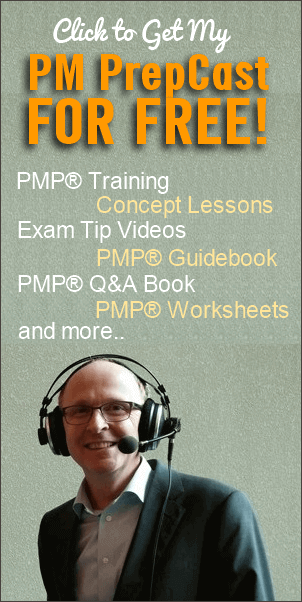 You would have noticed that Scope management processes have two distinct words – requirements and scope – as in Collect Requirements and Define Scope.
You would have noticed that Scope management processes have two distinct words – requirements and scope – as in Collect Requirements and Define Scope.
What is the difference between Requirements and Scope?
While there is a short lesson on this for now think of it as ‘business requirements’ and ‘project scope’.
Does it make sense?
Well, Requirements are capabilities that are required to be present in the product, service or result that project is supposed to produce in order to satisfy a formal agreement (which could be a Contract). Whereas Scope consists of the activities that need to be done in order to achieve the requirements.
In short, requirement is outward facing – specified by customer/business; and scope is inward facing – to be provided by the project. You understand customer’s business requirements and turn them into project scope. This means that we derive scope from requirements.
That is why after collecting requirements we define the scope of the project (PMI defines these two processes in this order). However, in strict practical sense these processes overlap in ways that is unique for the project.
Planning for managing project scope involves creating a plan that outlines how scope is to be defined, controlled and managed throughout the project.

Figure: Flow from requirements to scope to WBS to activities
Stakeholders provide requirements, which are turned into project scope, which further are divided into Work Breakdown Structure (WBS), which them are broken down further into activities. Project Scope Management knowledge area covers the flow till WBS.
You would need project management plan (with their subsidiary plans) and Project charter (contains high-level business needs giving you some sort of context to help come up with scope creation and management plan). Apart from these you can make use of available templates from older similar projects in the organization.
One of the ways to create scope management plan is by involving experts in the organization, or outside the organization. These people have the necessary knowledge, experience and foresight to guide you about the approach.
You would meet with senior team members, project sponsor, people from Project Management Office (PMO) and customer will help understand more about product and project scope, the challenges involved in collecting and managing them.
This project management activity produces a plan to collect and manage, and then control changes to project scope.
This plan describes the approach to be used to define detailed scope, to create Work Breakdown Structure. It also describes the process to validate scope with the customer and the techniques to control scope so that unwanted features do not get into the product.
This project management exercise produces another plan apart from the Scope management plan. That is, the Requirements management plan.
What is Requirements Management Plan?
It is important to outline which of the tools and techniques are used for the current project to collect business requirements. It is also necessary to outline how they these requirements are documented, analyzed and how changes are authorized, managed and communicated to stakeholders throughout the project.
If project is planned to be performed in phases as discussed in an earlier lesson, the relationship between phases also determines how requirements are managed. The level of detailing to be done upfront might be less if phases are iterative than if phases are sequential.
All this information is captured in a document called requirements management plan. This document also captures the process by which requirements are prioritized, and traced to deliverables.
Before we move onto the next process in Scope management knowledge area, let us look at two possibilities you should know about that is going to help you manage project scope much better!



